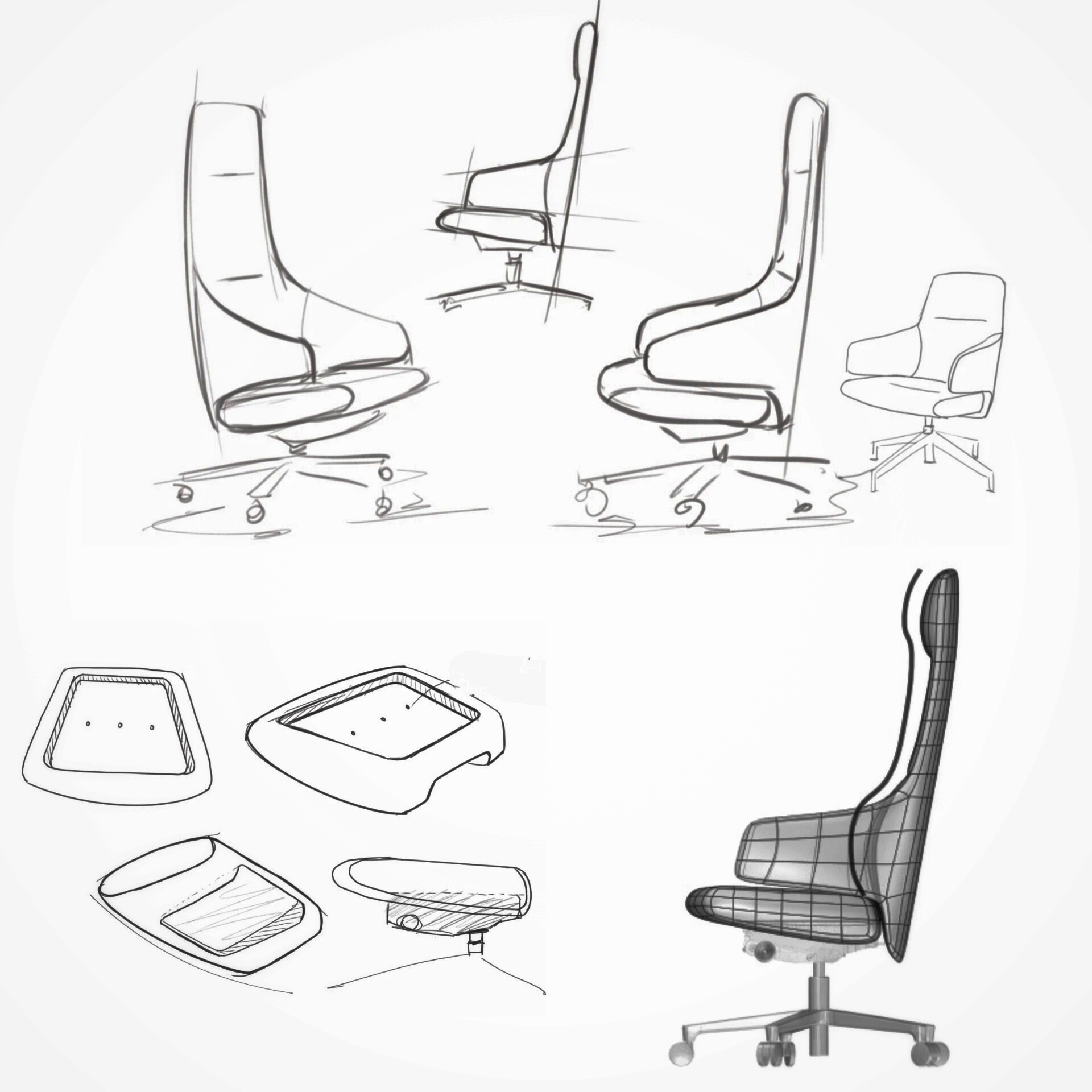
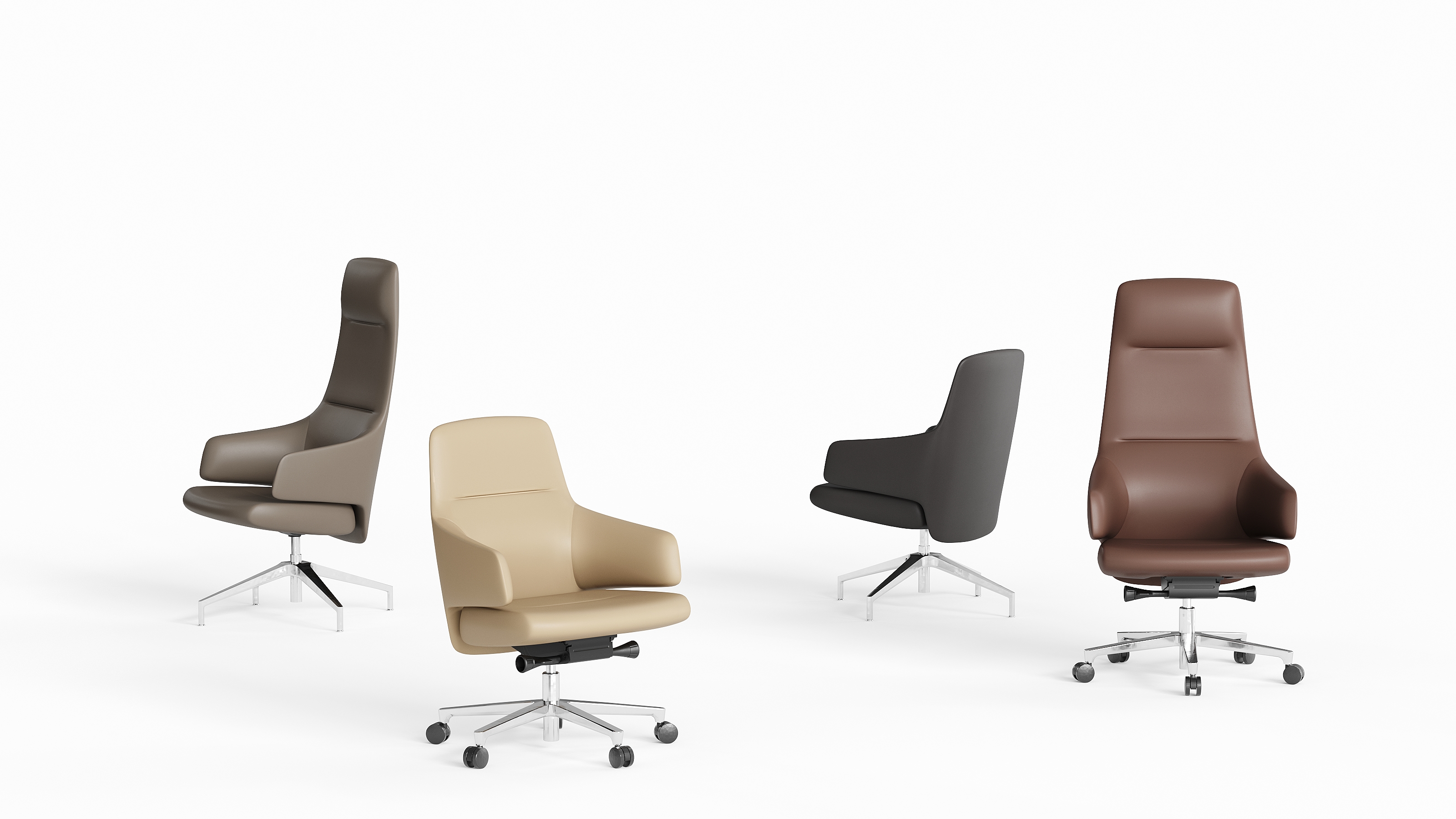
Design inspiration: bathing in the moonlight, striking the string of the violin, feeling an ethereal galaxy romance. A fine tone fondles the atmosphere; The designer wants to play out a duet of form and function to curve out the beauty of such a soothing touch
PRODUCT OPTION SET1
Violin Chair/highback/Alumiun 5 ways | W665*D665*H1230/1330
Violin Chair/low back/Alumiun 5 ways | W665*D665*H870/H970
Material
Shell frame: steel frame + polyurethane foam + upholstery fabric, durable and non-deforming, not collapsing
Donati mechanism: 10 cm adjustable height, adjustable seat and backrest tilt
Base: aluminum alloy 5-way
Caster: PU
Process
Base: polished aluminum alloy
PRODUCT OPTION SET2
Violin Chair/highback/Alumiun 4 ways | W715*D715*H1260
Violin Chair/low back/Alumiun 4 ways | W715*D715*H900
Material
Shell frame: steel frame+polyurethane foam+upholstery fabric, durable and non-deforming, not collapsing
Bottom bracket: Raymax aluminum alloy
Base: aluminum alloy 4-way
Process
Base: polished aluminum alloy
Design Derivation: Streamline Moderne
Streamline Moderne emerged in the early 20th century as a design trend focused on aerodynamics and minimalism, mainly influenced by the Great Depression and the need to adapt to a new reality. The excesses of Art Deco such as sharp angles are replaced with streamlined curves. European design traditions including constructivism and New Objectivity also gave rise to Streamline Moderne. The trend first swept transport and architecture, then architecture and household appliances, characterized by aerodynamic shapes, curved edges, horizontal lines, and nautical themes. By streamlining and minimalizing Art Deco, this design trend communicated a sense of futurism and advanced aesthetics. Till the 1950s, the popularity of Streamline Moderne elapsed, giving way to other design trends. However, the streamlined design relies upon scientific support and tends to prioritize functionality over other factors, in the name of minimalism. Therefore, minimalist interior design simply focuses on simplicity and creating a clutter-free home. This is particularly the case with smaller living space designs where maximizing the available space is essential. It turns out to be utilizing a neutral monochrome color palette indiscriminately to create the same sense of calm and cleanliness. Modern minimalist interior design even goes further by emphasizing clean lines, efficient use of space, and practical furniture arrangements. By incorporating these elements, a small space can feel larger and more open. Additionally, this design approach has been shown to increase focus, productivity, and even the value of a home.
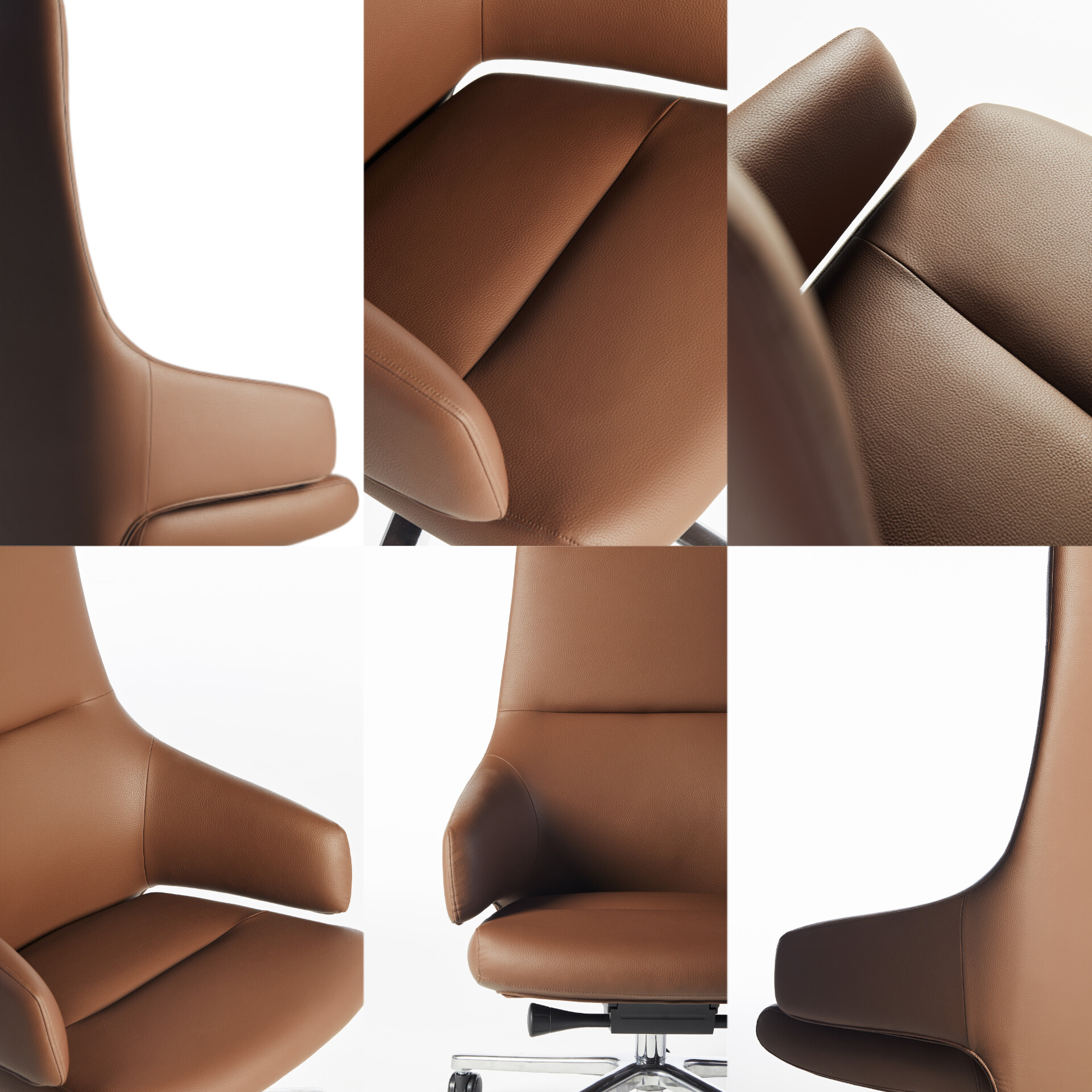
Modern minimalism epitome: appearance as sleek, clean, deco-free, functionality placed at the core of design value
However, a minimalist mindset not only aims to achieve higher efficiency or availability but to ease attention pressure and focus on a more intentional and fulfilling self-existence. Moreover, achieving a serene and streamlined home involves incorporating multiple textures into the space such as the use of rugs and other textiles. Yet, modern interiors oversimplify design schemes by regular de-cluttering, keeping only essentials, standardized space management, and so forth. In doing so, the scope of visual investments becomes limited to stylized replication rather than the pursuit of long-lasting quality and texture. It may trigger an overlook of personalization and ambient warmth that could perceivably differ one space from another. Additionally, some may feel overwhelmed by the pressure to conform to minimalistic standards or may struggle with letting go of sentimental items. If taken to an extreme, minimalism can lead to a cold and sterile environment devoid of personal expression. It is important to strike a balance and find a minimalist approach that aligns with individual preferences and values.
More interestingly, consumerism-driven personalization preoccupies the use of minimalism in the hospitality industry only to impress their guests. Yet, even though seemingly oversimplified at first sight, minimalist lobby design tries to exude both a sense of effortless modernity and attentive sophistication as well as inclusivity and exclusivity. As the first touchpoint, hotel interiors focus on building memorable distinctions such as polished marble floors or tailor-made wooden furnishings, which not only convey a sense of opulence but also provide a tactile and sensory experience for guests. The strategic placement of curated artworks or sculptural installations also adds a unique flair, stimulating aesthetic senses and motivating their own discovery. Furthermore, a combination of natural light during the day and subtle, well-placed lighting fixtures during the evenings also create a warm and inviting environment that resonates with guests on an emotional level.
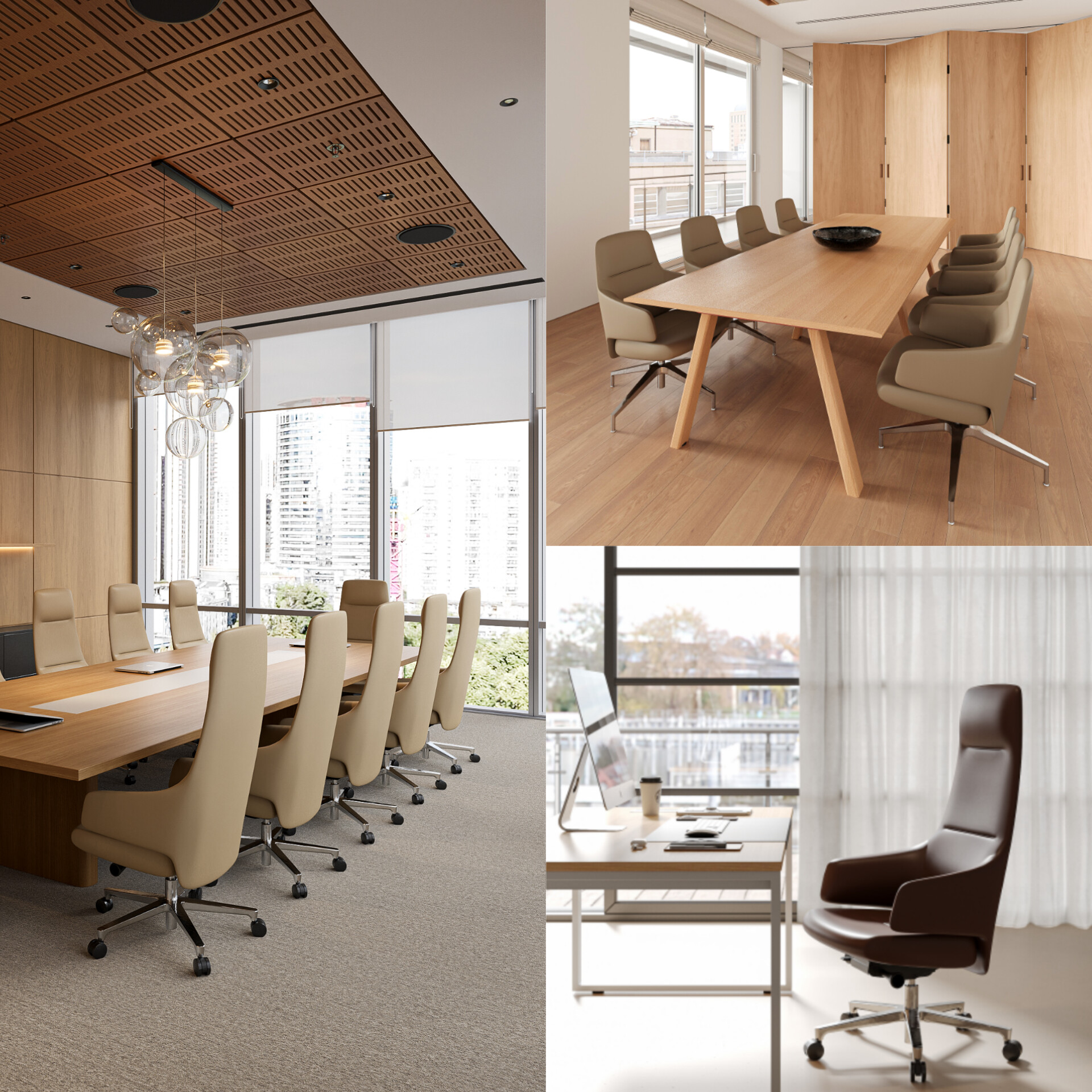
Considered layout and fitting arrangements adaptable to various settings
APPLICATION SCENARIOS
- Meeting space: Combining low-back violin chairs and an octagonal table can create an elegant and stylish meeting place. The understated design of the low-back chairs, with a combination of aluminum alloy legs and leather upholstery, ensures stability and reliability during long-duration meetings, while enhancing the overall aesthetics.
- Executive meeting space: High-back violin chairs in a five-star base with wheels provide flexibility for meeting communication, and the smooth curves make the entire meeting space more elegant and spacious. High-back violin chairs can provide users with maximum comfort and support, ensuring that they do not feel tired or uncomfortable during long periods of sitting. They also provide a comfortable and efficient meeting environment for a space that accommodates 10 to 12 people.
- CEO office: The elegant temperament and comfortable sitting experience of the high-back violin chair combine form and function. It is suitable for high-end business purposes and is ideal for CEO offices.
Ergonomics as a Holistic Approach to Interior Design
In fact, a holistic approach to creating human-centered design underlies the notion of ergonomics which is developed on the basis of functionalism, utilitarianism, and streamlined aesthetics. Holistic interior design emphasizes the wellness of the mind, body, and soul as a whole achieved through thoughtful design choices. It combines various disciplines such as biophilic design, color psychology, human biology, and ergonomics to create spaces that promote physical, mental, and spiritual health. It suggests a balance between function and comfort through reasonable layout and arrangements of spatial objects to reach harmony among different forces. Natural colors are also favored under this framework as they have a soothing effect and can positively impact perspectives, feelings, and emotions. Lighting injects the basic mood tone of a space such as natural light in holistic architecture can help control the mood and ambiance of a space. The biophilic design further incorporates nature into coordinating human well-being by reducing stress and increasing metabolism. The body and mind connection is the core principle of holistic living.
Ergonomics is thus a critical aspect of interior design to realize connectivity. By considering the physical needs of users, such as posture, movement, and comfort, designers can develop spaces that are both comfortable and safe to use. This helps to reduce the risk of injuries, discomfort, and stress, ultimately enhancing overall well-being. Compared with external streamlined working mechanisms to promote working productivity, ergonomics-based designs prioritize the comfort of use, thereby increasing satisfaction, motivation, and improved performance outcomes. Finally, it takes minorities and cost-effectiveness into account, ensuring the maximum benefits for users. For instance, in order to make the best of existing designs and consume less, flexibility, availability, and recyclability are seriously considered. A sustainable office is required to adapt to the alternative work model and can be stretched towards daily, long, and short-term flexibility of office use. Daily flexibility chooses to be supported by multifunctional products such as freestanding screens with whiteboards, which not only improve the acoustic environment and shield an area but also enable optional writing. Short-term flexibility needs a dedicated space for a fixed period of time whereas long-term flexibility is a matter of making conscious choices from the very beginning so as to be able to scale the interior design up or down readily. The idea of flexibility is inherent in a comprehensive interior design solution.
DESIGN CREATIVES
- Height adjustment and tilt lock
- Ergonomic curved design that conforms to the human body
- Silent casters for smooth mobility
- Elegant lines
- Integrated slim backrest design
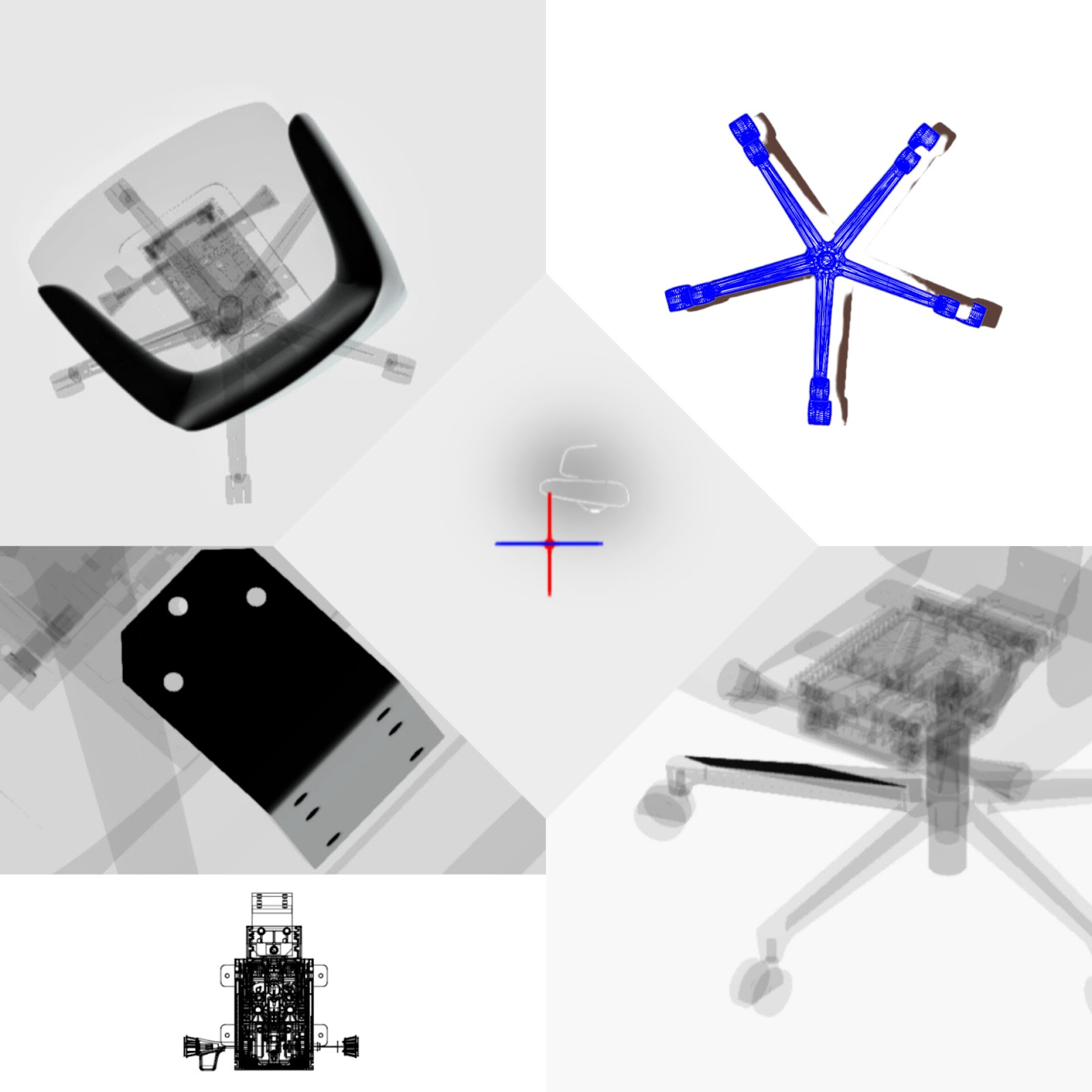
Ergonomics-based improvements from 2D sketch to 3D modeling of Violin Chair and of which main parts involved
Designers Introduction